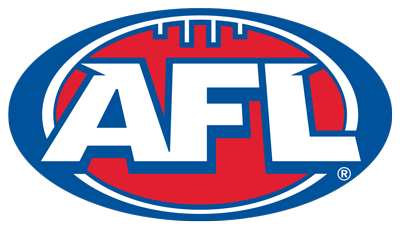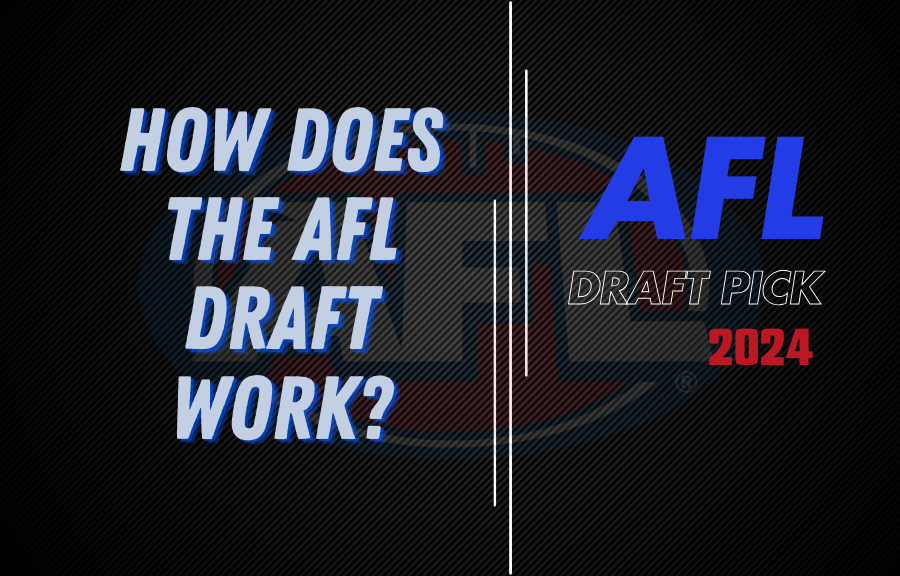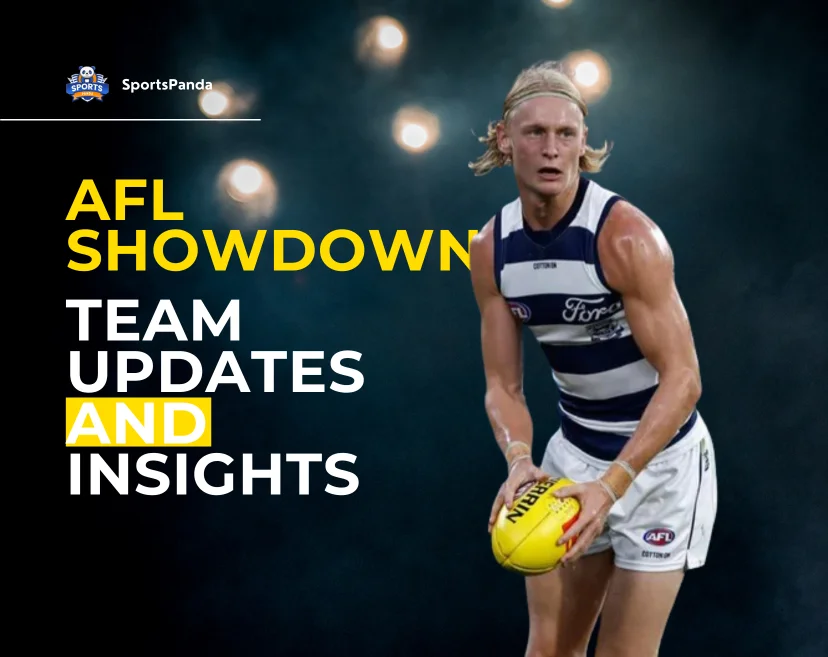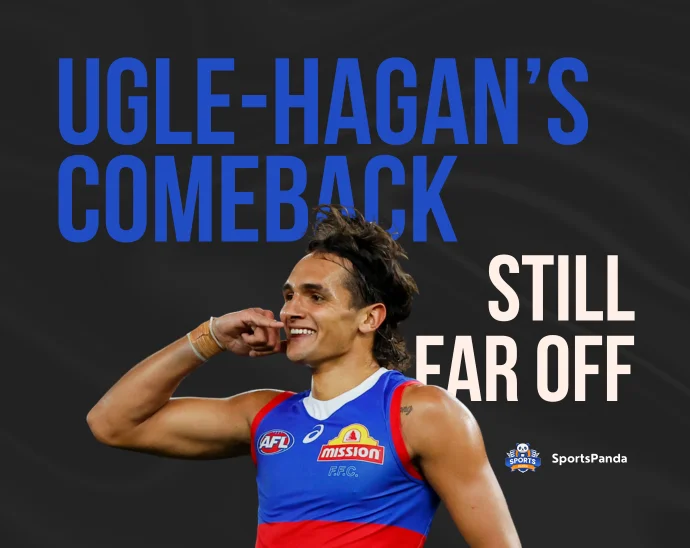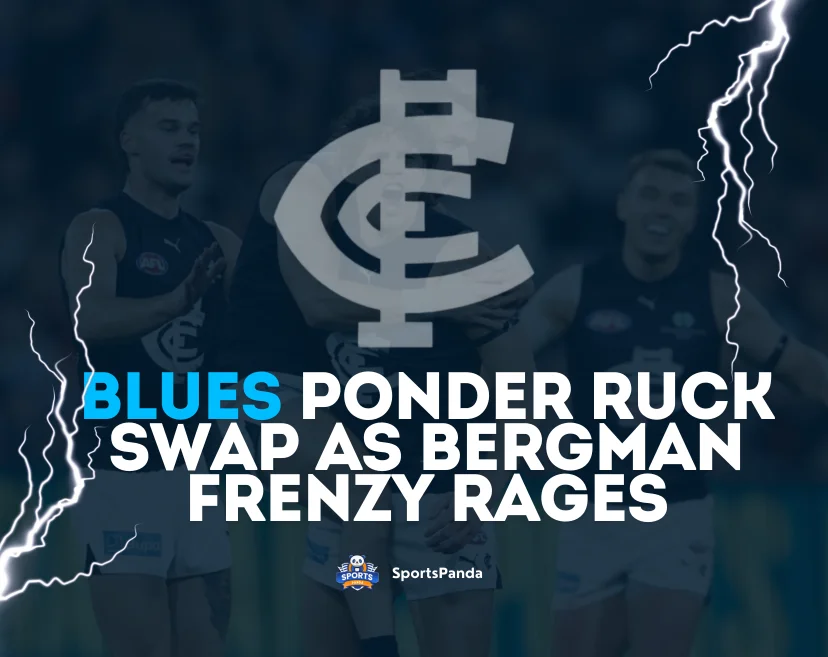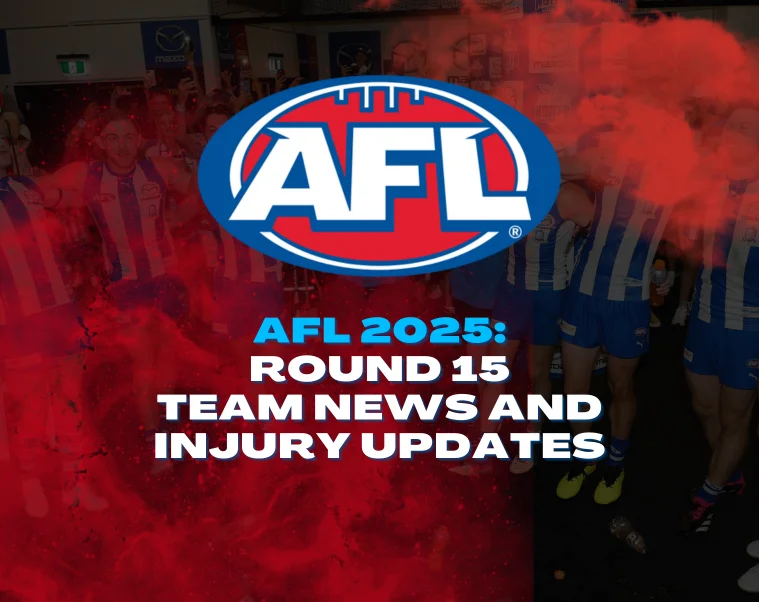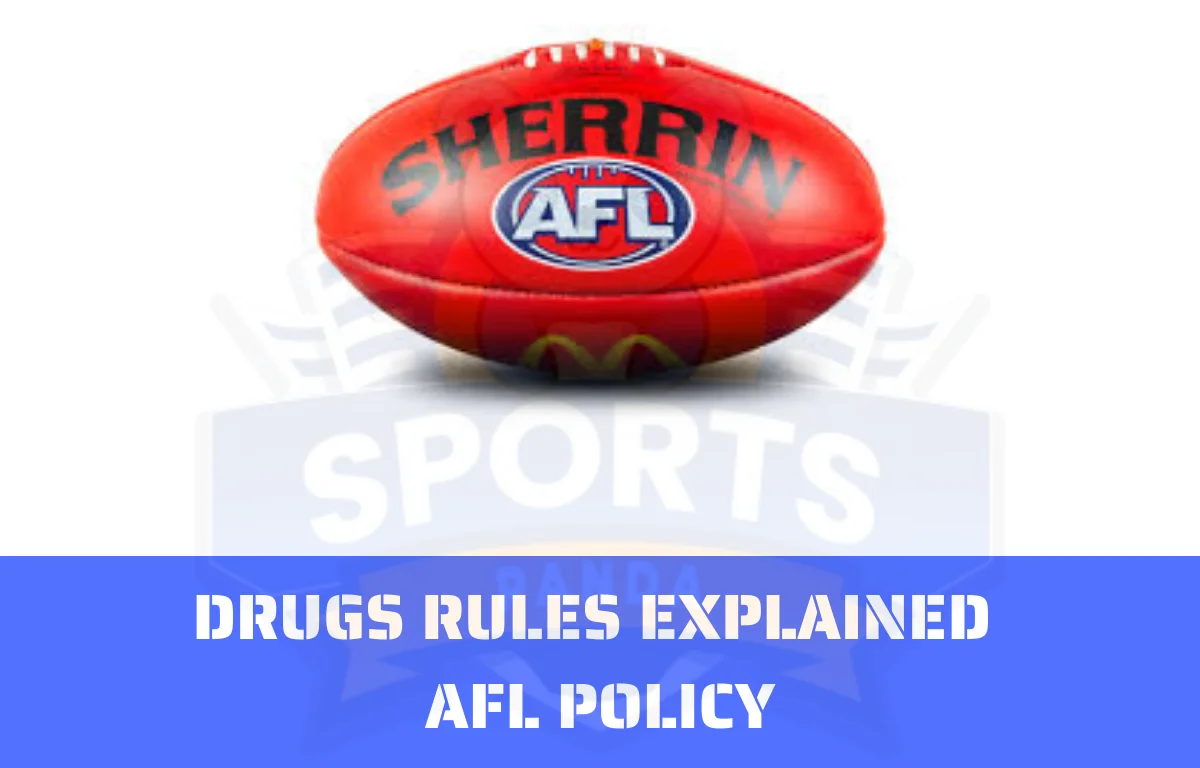How does the AFL Draft work ?
Last updated on November 23, 2024 at 17:56 pm
Posted on November 23, 2024 at 01:21 am
How Does AFL Draft Works
Curious about how the AFL Draft works? The draft order is based on the previous season's ladder position, with the bottom team picking first each round. Compensatory picks for free agents and a points system adding value influence teams' talent decisions. Players must meet criteria and attend the Draft Combine for assessment by clubs. Bidding on father-son and academy players adds strategy to the draft process. Competitive balance is maintained through draft points and trading, shaping final rosters. Understanding these components gives insight into how clubs navigate the Australian Rules Football draft dynamics.
Draft Order Determination
The AFL Draft order is determined by the reverse ladder position from the previous season. This means that the team that finished at the bottom of the ladder will get the first pick in the draft. As each round consists of 18 picks, one for each team, the draft order plays a vital role in a team's strategy for selecting new talent. However, the draft order can change due to compensation picks and trades, allowing teams to maneuver and secure players they're targeting. Teams must carefully consider their draft strategy based on their position in the draft order (impacting team decisions). The points system, which assigns a value to each pick, influences how teams approach their selections. Understanding the Draft Value Index (DVI) and the points associated with each pick is essential for teams to make informed decisions during the draft night. By analyzing the draft order and points system, teams can maximize their chances of securing the best talent available to strengthen their squad.
Compensatory Picks and Eligibility
Coming off the discussion on draft order determination, understanding compensatory picks and their eligibility criteria is essential for teams maneuvering through the AFL Draft process. Compensatory picks are determined by the net total points for free agents lost and gained, calculated based on contract value and player age. Free agents are ranked in bands, with the top five percent earning a first-round compensation pick. The AFL expert committee reviews the formula outcomes and can recommend adjustments for fairness.
Compensatory picks play a vital role in maintaining competitive balance among clubs by compensating for the loss of valuable players. The calculation process considers factors like contract value and player age to assign compensation picks accurately. Being aware of the free agent rankings and compensatory pick calculations can give teams an edge in strategizing their draft picks to strengthen their squads effectively. (Free agency impact on AFL Draft)
Draft Rounds and Duration
When participating in the AFL Draft, teams engage in a structured selection process across multiple rounds, allowing each team to pick players from the available pool. The AFL Draft consists of several rounds, typically following the teams' standings from the previous season in reverse order. This draft structure enables teams to select players in an organized manner, with each round allowing a team to choose one player. The draft usually spans a few days, depending on the number of rounds and the complexity of selections. The National Draft is the primary event, usually held in late November, followed by the Rookie Draft and the Pre-Season Draft (incorporating trades and strategic planning). Additionally, a mid-season draft takes place in May to fill vacancies due to injuries or retirements.
Nomination and Draft Combine
During the nomination and draft combine phase, aspiring AFL players undergo a rigorous selection process to showcase their physical and mental abilities to AFL clubs. The nomination process holds significant importance as it sets the stage for players to be considered for the Draft Combine. As players prepare for the combine, they focus on honing their skills and fitness levels to stand out during the evaluation process. Nominating within the specified period is essential for players to be eligible for consideration by AFL clubs. Players engage in intensive physical and mental training to excel in the various tests conducted during the combine (70% of draft nominees entered the pool last year). The combine provides a platform for players to demonstrate their capabilities through physical assessments and interviews with AFL clubs. Additionally, players attend educational sessions to enhance their understanding of club expectations.
Selection Criteria and Process
Understanding the selection criteria and process in the AFL Draft is essential for aspiring players looking to make their mark in the league. To be eligible for the draft, players must nominate and not be tied to an AFL club, meeting the minimum age requirement of 18 by December 31 of the draft year.
The selection process involves clubs taking turns choosing players from the pool of nominees, with draft order determined by ladder position. During the draft, teams can bid on players tied to other clubs through special rules like the father-son and academy systems.
Compensation and priority picks can alter the draft order, while the draft continues until clubs no longer wish to select players. Understanding the rules surrounding player eligibility and the selection process is essential for players aiming to land a spot in the AFL and for teams strategizing their picks.
Draft Value Index and Trading
To grasp the mechanics behind the AFL Draft's inner workings, it's crucial to comprehend the Draft Value Index (DVI) and the trading dynamics that shape player acquisitions.
-
The Draft Value Index (DVI) assigns points to each draft pick, influencing draft pick valuation.
-
Trading draft picks during the trade period allows clubs to strategically move up or down the draft order based on their needs, aiming for the number one pick.
-
Clubs strategically use draft points to secure top talent and manage their lists, showcasing different trading strategies.
Trading draft picks enables clubs to enhance their team composition by strategically acquiring players.
By understanding the draft pick valuation and employing effective trading strategies, clubs can position themselves for long-term success in the AFL.
The DVI model plays a significant role in ensuring fairness and transparency in the draft process, guiding clubs like Richmond in making informed decisions when it comes to player acquisitions.
Balancing the utilization of draft points with current list strength is crucial for clubs aiming to achieve competitive balance and sustained success in the league.
Father-Son Rule and Academies
The Father-Son Rule in the AFL draft system allows clubs to nominate eligible players with a family connection, based on their father's previous games.
When a club nominates a father-son player, a bidding process unfolds where teams must match the bid using draft picks.
Similarly, Academies offer clubs priority access to players from specific regions or backgrounds, leading to a unique selection process during the draft.
Father-Son Selection Criteria
For clubs with over 20 years of VFL/AFL history, the father-son selection criteria plays an important role in determining player eligibility and draft processes.
When it comes to father-son eligibility, drafting strategies become vital for clubs aiming to secure these players.
-
Eligibility Requirement: Fathers must have played at least 100 games for the club to make their sons eligible under the father-son rule.
-
Draft Pick Value: Clubs need to give up draft picks of equivalent value to match a bid on a father-son player, utilizing the Draft Value Index.
-
Bidding Process: Clubs can nominate a draft pick to take the eligible son, with the father's club required to use its next available draft pick if it wishes to draft the son, after the highest bidder.
This selection process guarantees fairness and strategic decision-making in securing talented players through the father-son rule, making it a key aspect of AFL draft dynamics.
Academy Player Bidding
Clubs participating in the AFL draft process must navigate the intricacies of the Academy Player Bidding system, which intertwines the Father-Son Rule and academies.
Academy player valuation becomes essential in this process, as clubs aim to secure talented prospects tied to their academies. Bidding strategies play a pivotal role, with clubs needing to strategically use their draft picks to match bids made by other teams.
The Draft Value Index assigns points to each pick, determining the value required to match a bid accurately. In this system, clubs must give up draft picks of equivalent value to secure their desired academy players.
The bidding process can impact the draft order considerably, forcing clubs to manage their picks and points wisely. By allowing lower-ranked teams access to higher-value picks, the system promotes competitive balance.
To succeed in the academy player bidding process, clubs must engage in strategic planning to maximize their draft outcomes effectively.
Draft Points Matching
Frequently, guiding the AFL draft process involves understanding the intricacies of draft points matching, particularly when it comes to the Father-Son Rule and academies.
When dealing with draft points matching in the AFL, you need to evaluate the draft value assigned to each pick and the bidding strategies employed by clubs.
- Clubs must carefully manage their draft picks to guarantee they've enough points to match bids on desired players.
- The father-son rule adds complexity to the draft process, requiring clubs to plan carefully.
- Trading draft picks and points can help clubs move up in the draft order or secure specific players.
Understanding the draft value index and the implications of bidding strategies is vital for clubs aiming to secure players through the father-son rule or academies.
Bidding System and Priority Access
When it comes to the AFL Draft bidding system and priority access, understanding the process overview is essential.
Clubs can bid on father-son, Northern Academy, and Next Generation Academy players, with the option for priority clubs to match bids.
This system relies on draft points values and strategic decision-making to secure desired players effectively.
Bidding Process Overview
Steering through the AFL Draft bidding process can be both intricate and pivotal for teams aiming to secure top talent. Understanding the player valuation and bidding strategies is key to success in the draft. Here's a brief overview:
- Bidding Strategies: Clubs need to assess the value of players accurately to make strategic bids that don't compromise their draft position.
- Player Valuation: The Draft Value Index assigns points to each pick, guiding clubs in determining the value of their selections and bids.
- Matching Bids: To secure a player, a club must match the highest bid's points value using their draft picks. This process can dynamically The ability to trade draft picks can change the draft order and impact team strategies significantly, especially for clubs targeting the premiership.
Navigating the bidding process requires astute decision-making to optimize player acquisitions while managing draft assets effectively.
Impact of Priority Access
Traversing through the AFL Draft bidding process involves not only evaluating player values and bidding strategies but also understanding the impact of priority access.
The priority access system, which includes father-son prospects and Next Generation Academies (NGA), has strategic implications for clubs. With the ability to match bids on players tied to their clubs via Academy rules, teams must consider the points calculation and discounts involved.
The 20% discount on points for father-son and Academy players provides some relief, but clubs still need to manage their points deficit carefully. The upcoming 2025 changes, such as reducing the discount to 10% and limiting points to the first 54 picks, will alter the landscape further.
From Academy types to bidding limitations and the influence on draft strategy, priority access plays an essential role in shaping clubs' rosters and draft decisions. Clubs must navigate these rules wisely to secure talented players while balancing their draft points effectively.
Rookie and Pre-Season Drafts
Amid the flurry of activity post-National Draft, AFL clubs turn their attention to the Rookie and Pre-Season Drafts to round out their player lists for the upcoming season.
-
Draft Purpose: The Rookie Draft targets delisted AFL players and mature-age recruits, while the Pre-Season Draft is used to fill any remaining list spots.
-
Eligibility Criteria: The Rookie Draft focuses on delisted players and mature-age recruits, whereas the Pre-Season Draft includes players overlooked in the National and Rookie Drafts.
-
Selection Order Determination: Both drafts use reverse ladder positions from the previous season to determine selection order.
The Rookie Draft allows clubs to sign players on rookie contracts who weren't on an AFL primary list the previous season.
Meanwhile, the Pre-Season Draft enables teams to add overlooked talents before the new season begins.
These drafts, held after the National Draft, play an essential role in shaping the final rosters of AFL clubs, ensuring fair and competitive player recruitment processes.
Competitive Balance and Strategy
Achieving competitive balance in the AFL Draft is essential for ensuring fair opportunities for all clubs to enhance their rosters strategically.
Draft equity is maintained through mechanisms like compensatory picks for teams losing players, priority draft picks for struggling teams, and a draft points system that regulates trading.
Team strategies play a vital role in maneuvering the draft, with clubs using the draft value index to make informed decisions and bidding on priority players to secure top talent.
By trading picks and strategically selecting players, teams can bolster their rosters and address specific needs.
The draft process, which includes eligibility criteria, talent assessments, and player selections, aims to distribute talent evenly among clubs.
Fequently Asked Questions
Can Players Refuse to Join the Team That Drafts Them?
Yes, players can refuse to join the team that drafts them, but this may lead to delisting. Draft eligibility requires players to be at least 18 years old. Once drafted, players are bound by player contracts.
Are There Any Restrictions on International Player Selections?
When it comes to international player selections in the AFL draft, there aren't specific restrictions mentioned. International eligibility follows general rules, with players needing to meet age requirements and nominate for the selection process.
How Do Clubs Decide Which Players to Bid On?
In club strategies for the AFL Draft, teams decide which players to bid on based on player rankings. They assess talent, needs, and potential value to their roster. It's a balance of immediate impact and long-term goals.
What Happens to Undrafted Players After the Draft?
After the draft, undrafted opportunities open up for players. They can join state leagues, train with clubs, or get picked in the rookie draft. Post draft pathways offer chances to develop, get noticed, and pursue football careers.
Can Draft Picks Be Traded for Non-Player Assets?
Yes, in AFL, draft picks can be traded for non-player assets. The AFL Draft Value Index determines asset valuation. Trading draft picks allows teams to strategize roster management effectively. Remember to adhere to AFL regulations to avoid penalties.
